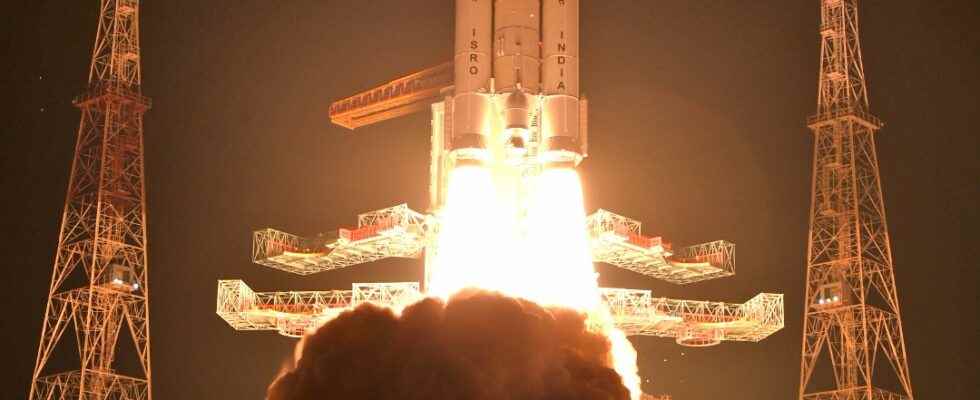The satellite connectivity operator OneWeb is relaunching, 8 months after the invasion of Ukraine and the start of its difficulties with Russia, with the takeoff of 36 satellites. The launch took place from India on October 22 and marks the country’s opening to new commercial space opportunities.
OneWeb is now hoping for 5 launches before next spring.
After the rain…
The sky is finally clearing for OneWeb. After the company went bankrupt in 2020 and then successfully sent out multiple satellite clusters in 2021, the group hoped that 2022 would be the year of the first profits. But since Russia invaded Ukraine on February 24, there have been many obstacles.
First, sanctions and counter-sanctions stopped the collaboration between Arianespace (which marketed rockets to send OneWeb satellites into orbit) and Roscosmos (which manufactures and operates Soyuz rockets). Then, the “hostage taking” of a cluster of 36 OneWeb satellites, still blocked today in Baikonur with its canceled takeoff, took place. OneWeb succeeded in the feat of finding emergency solutions in a few months, even if this required going through an indirect competitor (SpaceX) and an unexpected supplier, NewSpace India Limited, which offers Indian rockets internationally.
Great Indian Advances
On October 22 at 8:37 p.m. (Paris time), the most imposing of Indian rockets, the GSLV Mark 3, took off for the first commercial mission of its career with 36 OneWeb satellites on board. The mission to low orbit lasted 19 minutes and 45 seconds, to which it was necessary to add almost an hour and a half of ejections of groups of 4 satellites. The latter weigh 145kg each and have since opened their solar panels, then turned on their ion-electric thrusters to begin their slow journey to the constellation mesh located around 1,200km above sea level.
The Indian success tastes of revenge on the difficulties of OneWeb, but also for India, which is trying to emerge with its head held high from a very complicated period between the health crisis linked to COVID-19, supply problems for its space sector and a transition between public and private that takes time. It was also the largest payload of all time for an Indian launcher. Note that the Indian operator Bharti Global, which holds the majority of shares in OneWeb, was pleased to have been a determining factor in the choice of operator.
OneWeb hopes to close a chapter
In the coming months, OneWeb (which has multiplied commercial partnerships this year) strongly hopes to complete the deployment of the first version of its constellation to reach 648 units in orbit. Enough to consider a second phase more calmly, but also to ensure ideal coverage of the globe with existing satellites. Indispensable for air and naval services as well as coverage of remote and polar areas.
For this, there remains at least one cluster of 36 satellites which will also take off from India, in Sriharikota, but also three launches with SpaceX’s Falcon 9 with larger capacity deployment devices (46 to 48 satellites).
Source : SpaceFlightNow

4